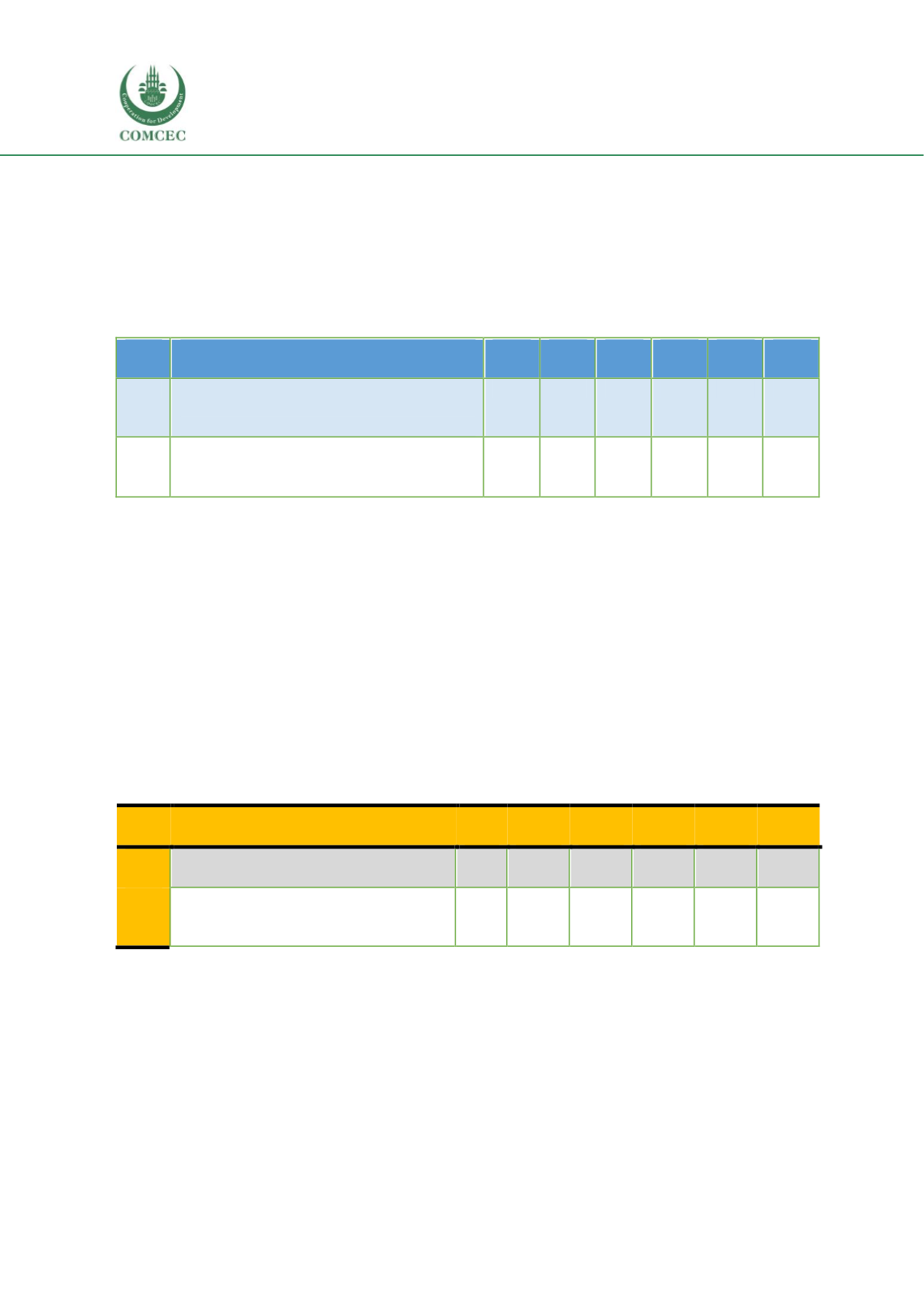

Skills Development: Vocational Education
in the Islamic Countries
64
E. Result fromindustry
In order to clarify the issues that arose from the above (Administrator and Teacher) findings,
industries were visited and surveyed. Table 3.9, 3.10 and 3.11 were constructed on industrial
participants’ responses who had knowledge and experiences with industrial setups.
Industrial views towards TVET in Bangladesh: Success, Challenges and industrial collaboration
Table 3.9: Success in TVET sector in Bangladesh (Industrial perspective)
S/No ITEMS
SA
%
A
%
N
%
DA%
SDA
%
X
1
The industry has partnership with
institutions which provides immediate
employments
17.1
5.7
28.6
42.9
5.7
2.86
2
Both vocational institutions and industry
collaboratively organize exhibitions to
motivate young unemployed people
8.6
25.7
25.7
31.4
8.6
2.94
From Table 3.9, majority of industrial participants (over 77.2%) did not agreewith item 1 that
the industry has partnershipwith institutions, which provides immediate employment. Though
22.8% agreed with the statement and its mean value (X for I = 2.86) is considerably low (less
than 3.5) thus, the statement is not accepted. This is in conformity with finding number 1 in
Table 3.7 (in TVET and industries linkage and existing Gap). Similarly, a number of industrial
participants (65.7%) did not agreewith item2. The mean value (X for I=2.94) is lower than the
average mean value (3.5). Therefore, the statement is not accepted.
From this discussion, we derive the following findings:
1.
The industry has no partnership with institutions which provides immediate
employment.
2.
There is lackof collaboration between vocational institutions and industry in organizing
exhibitions to motivate young unemployed people.
Table 3.10: Challenges in TVET sector in Bangladesh (Industrial perspective)
S/No ITEMS
SA
%
A
%
N
%
DA
%
SDA
%
X
1
There is a joint assessment of
students by industry and institutions
14.3
31.4
17.1
20
17.1
3.06
2
Female Skilled workers face higher
level of unemployment compared to
male
14.3
31.4
14.3
17.1
22.8
2.97
Table 3.10 shows that more than half of the industrial participants (54.3%) did not agree with
the statement of item1. Itsmean value is average (X for I=3.06) which is less than 3.5. Similarly,
a number of industrial participants (54.2%) did not agree with the statement of item2. Itsmean
is belowaverage (X for I=2.97), that is, the value is lower than 3.5. Therefore, both the statement
is not accepted. From this discussion, we conclude that TVET sectors of Bangladesh is facing the
following challenges:
1.
Generally, there is no joint assessment of students by industry and TVET institutions.
2.
Femaleworkers do not necessarily face higher levels of unemployment as compared to
male.
















